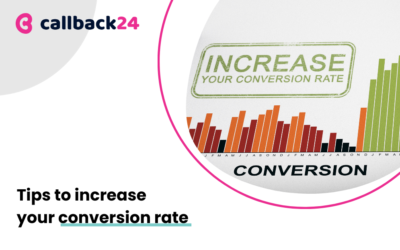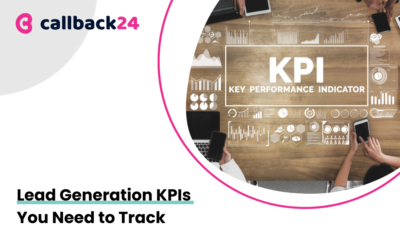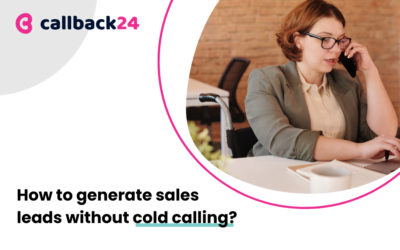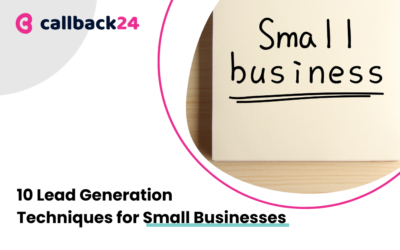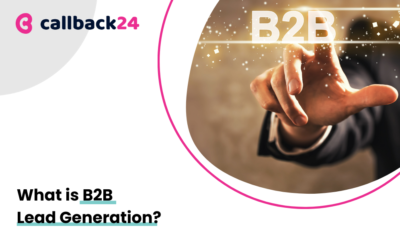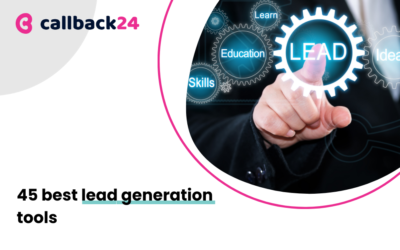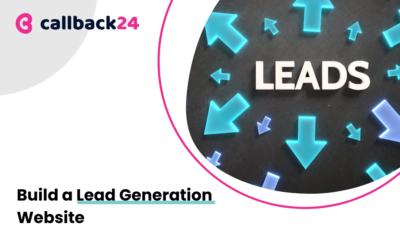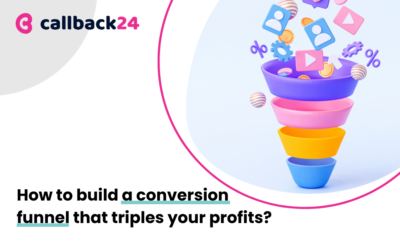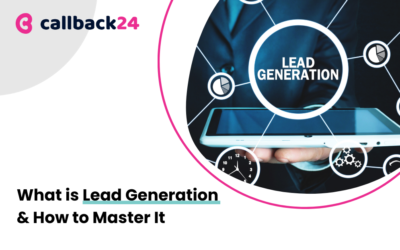TL;DR
- Lead nurturing is the process of developing relationships with potential customers, usually through targeted content and communications, to build trust and eventually convert them into sales. There are many benefits to lead nurturing, including increased sales, improved customer relationships, reduced marketing costs, and increased efficiency.
- Lead scoring is a process of assigning a numeric score to leads in order to prioritize and qualify them for sales follow-up, based on their likelihood of becoming a paying customer.
- The first step in starting a lead nurturing campaign is to identify your target audience. Once you know who you are targeting. Personalize your outreach by segmenting your leads and tailoring your communications to their specific needs.
- Timing, frequency, and personalization are key when it comes to lead nurturing. Know your buyer personas inside and out so that you can create targeted campaigns that resonate with them.
- Invest in a system that automatically delivers content to prospects based on their interactions with your brand. Use marketing automation to free up time for other tasks, and measure the performance of your lead nurturing strategy regularly.
Lead nurturing is a process of building relationships with potential customers, even if they are not yet ready to buy. The goal of a lead nurture program is to keep your company top-of-mind as prospects move through their research and decision-making process until they are finally ready to purchase. By staying in touch with leads regularly, you can position yourself as a trusted advisor that they can turn to when they are ready to buy. There are many different ways to nurture leads and we will present them in this article.
The definition of lead nurturing
Lead generation is all about getting people interested in your product or service. But it’s not enough to just get their attention. You need to develop a relationship with them so they ultimately become customers. That’s where lead nurturing comes in.
Lead nurturing is the process of developing relationships with potential customers, usually through targeted content and communications, to build trust and eventually convert them into sales.
A lead nurturing program can be very helpful in moving prospects through the sales funnel by providing the right information at the right time. It can also help you with lead scoring, so you know which ones are ready to buy.
What is lead scoring?
Lead scoring is a process of assigning a numeric score to leads to prioritize and qualify them for sales follow-up. The lead’s score is based on their likelihood of becoming a paying customer and is typically determined by factors such as their budget, authority, need, and timeline.
Lead scoring can help you determine which leads are ready to be contacted by sales, and which ones still need further nurturing. It can also be used to evaluate how likely a lead is to close, so you can prioritize your limited resources accordingly.
When setting up a lead scoring system, you’ll first need to identify the criteria that will be used to assign scores to leads. These criteria will vary depending on your business and what you’re selling, but some common examples include:
- Budget: Does the lead have the budget to purchase your product or service?
- Authority: Do they have the authority to make decisions within their organization?
- Need: Is there a need for your product or service within the organization?
- Timeline: Is there an immediate need for your product or service, or is this a longer-term project?
Once you’ve identified the criteria you’ll be using, you’ll need to assign numeric values to each criterion. For example, you might decide that leads with a budget are worth 2 points, while leads with an immediate need are worth 3 points. Assigning numeric values to each criterion will help you add up a lead’s score quickly and easily.
Once you have your lead scoring system set up, you can begin assigning scores to leads as they come in. You can do this manually, or use lead scoring software to automate the process. Whichever method you choose, make sure to regularly review and update your lead scores so that you’re always prioritizing the most qualified leads.
Benefits of lead nurturing
A lead nurturing program is one of the most important marketing strategies you can use to improve your chances of success. Nurtured leads are more likely to convert into customers and clients than leads that are not nurtured.
There are many benefits to lead nurturing, including:
- Increased sales
Nurtured leads are more likely to buy from you than non-nurtured leads.
- Improved customer relationships
By nurturing your leads, you can build better relationships with them. This can lead to improved customer satisfaction and repeat business.
- Reduced marketing costs
It costs less to nurture a lead than it does to acquire a new one.
- Increased efficiency
Automated lead nurturing can help you stay organized and use your time more effectively.
How to start a lead nurturing strategy?
The first step in starting a lead nurturing campaign is to identify your target audience. Once you know who you are targeting, you can develop a lead scoring system to determine which leads are most qualified.
From there, you can create targeted content that will appeal to your target audience and help move them through the sales funnel.
Finally, you need to measure your results so that you can continue to improve your lead nurturing strategy.
If you want to do good lead nurturing and start a lead nurturing strategy you should take a look at these points:
- Align marketing and sales
If you want your sales team to be successful, it’s important to align them with your marketing efforts. That means creating a sales process that takes into account the various stages of the buyer’s journey and nurturing relationships with leads throughout that journey.
By doing so, you’ll set your sales team up for success by giving them the tools and information they need to convert leads into customers. When it comes to aligning your sales and marketing teams, there are a few key things to keep in mind:
- Define the customer’s buying journey
The first step is to define the buyer’s journey and map out what your sales team needs to do at each stage. This will help ensure that everyone is on the same page and that your sales team knows what they need to do to nurture leads.
- Create targeted content
Once you know the buyer’s journey, you can create targeted content that will help your sales team nurture leads through each stage. This could include blog posts, e-books, infographics, case studies, and more.
- Build relationships
It’s important to remember that sales are all about building relationships. Your sales team should focus on nurturing relationships with leads throughout the buyer’s journey in order to turn them into customers.
2. Gather lead intelligence data
When it comes to growing your business, one of the most important things you can do is gather lead intelligence data. This data can help you better understand your prospects and make more informed decisions about your email marketing efforts.
One way to gather this type of data is to track the engagement of your potential customers. This includes things like how often they open your emails, click on links, and unsubscribe from your list. By understanding how engaged your prospects are, you can make changes to improve your results.
Another way to gather lead intelligence data is through surveys and customer feedback. Asking your prospects questions about their needs and wants can help you better understand what they’re looking for in a product or service. This information can then be used to improve your marketing efforts.
Finally, you can also use lead intelligence data to track the results of your email marketing campaigns. This includes things like how many people opened your email, clicked on links, and purchased something from your website. By understanding what works and what doesn’t work, you can make changes to improve your results.
By gathering lead intelligence data, you can make informed decisions about your email marketing efforts and improve your results.
3. Use email marketing to communicate your message
Email marketing is a key element in keeping your prospects engaged and up to date. By including key information in your emails, you can ensure that your prospects are always aware of your latest offerings and developments.
Some key elements to consider when planning your email marketing strategy include:
- The frequency of your emails. How often will you send them?
- The content of your emails. What information will you include?
- The format of your emails. How will you lay out the information?
- The target audience for your emails. Who will you send them to?
- The timing of your emails. When will you send them?
By carefully planning each of these elements, you can create an email marketing strategy that will keep your prospects engaged and up to date on all the latest news from your company.
4. Define a lead management process
Lead management is the process of demand generation, cross-channel communication, and relationships with customers. It is a systematic approach to identifying and lead nurturing and then converting them into customers.
The goal of lead management is to shorten the sales cycle and improve the conversion rate by providing quality leads to sales teams. A successful lead management process will help you better understand your target market, build relationships with potential customers and close more deals.
Here are some key components of a successful lead management process:
- Define your target market
Who are you trying to reach? What are their needs and pain points?
- Create a demand-generation strategy
How will you generate leads? What channels will you use?
- Nurture your leads
Once you have generated a lead, how will you nurture them until they are ready to buy?
- Convert your leads
When a lead is ready to buy, how will you convert them into a paying customer?
Tips for a good lead nurturing strategy
Personalize your outreach
If you want to succeed with your lead nurturing strategy, you need to personalize your outreach. This means understanding the buying process that your leads are going through and tailoring your communications accordingly.
One of the best ways to do this is to segment your leads based on their level of interest and engagement. For example, you might have a segment for qualified leads who are actively interested in your product, and another for leads who are still in the early stages of research.
By tailoring your message to each segment, you can increase the likelihood of converting leads into customers. And when it comes to lead nurturing tactics, there are a few key things to keep in mind:
- Timing is everything
Make sure you’re reaching out at the right time, with the right message.
- Frequency matters
Don’t bombard your leads with too much information, but don’t let them forget about you either.
- Keep it personal
Your leads are more likely to engage with you if they feel like you’re speaking to them directly.
Know your buyer personas
Lead nurturing campaigns are designed to target a particular lead and move them through the sales funnel. To be successful, these campaigns must be aligned with the sales process and the buyer persona of the lead. By understanding these two things, you can create a lead nurturing strategy that will help you close more deals.
When it comes to lead nurturing campaigns, one size does not fit all. The best way to ensure success is to tailor your campaign to the particular lead you’re working with. This means understanding their needs and wants and aligning your sales process with their buying journey.
To do this, you need to know your buyer personas inside and out. What are their pain points? What motivates them? What are their goals? Answering these questions will help you create content and messages that resonate with your leads and move them closer to a sale.
Investing the time to understand your buyer personas and craft targeted nurturing campaigns will pay off in higher close rates and more happy customers.
Engage prospects immediately
Successful lead nurturing is about engaging your prospects immediately and making sure you’re delivering the most qualified leads to your marketing professionals. By doing this, you’ll be able to keep your pipeline full of high-quality leads that are more likely to convert.
The most successful lead nurturing strategies are those that engage prospects immediately and make sure that the leads are of the highest quality. This means that marketing professionals need to focus on delivering the most qualified leads to their sales teams. By doing this, they can keep their pipeline full of high-quality leads that are more likely to convert.
One of the best ways to ensure successful lead nurturing is to have a system in place that automatically delivers content to prospects based on their interactions with your brand. This way, you can be sure that they’re always receiving the most relevant information possible and that your team is free to focus on other tasks.
If you’re looking to improve your lead nurturing strategy, consider implementing some of these tips:
- Make sure your website is optimized for lead capture. Include forms and calls to action on all of your pages so that visitors can easily sign up for more information.
- Provide valuable content that will help prospects solve their problems. This could include ebooks, white papers, webinars, or even just blog posts.
- Segment your leads so that you’re only sending relevant information to each individual. This will ensure that they’re not overloaded with information that isn’t relevant to them.
- Use marketing automation to automate some of the tasks associated with lead nurturing. This way, you can free up your team’s time so that they can focus on other projects.
- Regularly measure the performance of your lead nurturing strategy. This way, you can identify what’s working well and make changes as needed to your lead nurturing strategy.
Improve your Lead Nurturing Program
If you’re like most businesses, you’re always looking for ways to improve your lead nurturing strategies. After all, landing new customers is essential to keeping your business afloat.
One of the best ways to improve lead nurturing is by developing a landing page. This is a specific page on your website that’s designed to capture a lead’s information. It typically includes a form that asks for the visitor’s name, email address, and phone number.
Once you have a landing page set up, you can start running ads that drive traffic to it. You can also promote your landing page on social media and through email marketing campaigns.
Summary
Not only lead generation is important when you run your business, but also later activities, e.g. lead nurturing are crucial when you want to increase sales and improve customer experience.
Lead nurturing is about meaningful relationships with customers. Our tool – Callback24 allows you to nurture your leads by answering the phone in a quick period of time. Your potential customers will never wait for the call for more than 15 seconds. Callback24 gains customers for you outside your working hours and gives you the opportunity to schedule a call.



